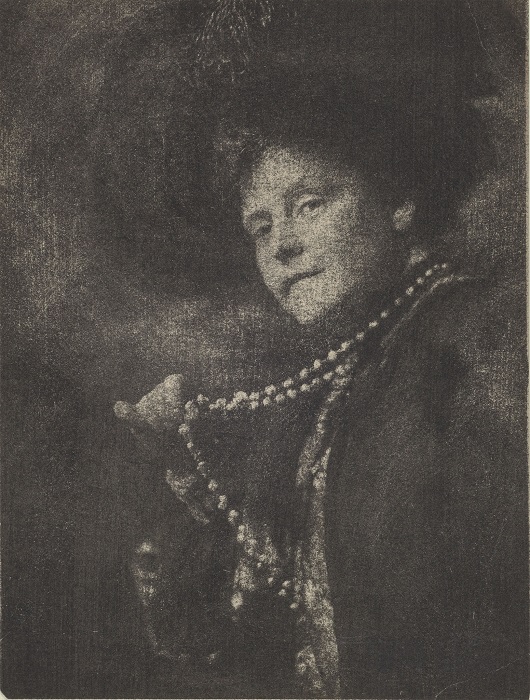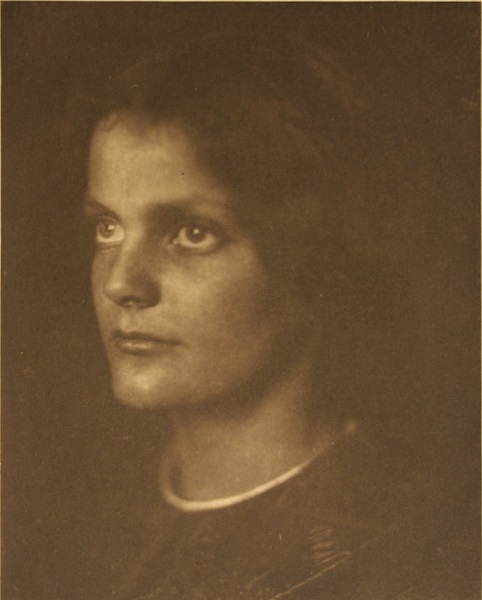The painted portrait by John Singer Sargent (above) and the photographic portrait by Gertrude Käsebier (below) both depict photographer Sarah Choate Sears. She was born as Sarah Carlisle Choate into a prominent Bostonian family, and her husband J. Montgomery Sears, whom she married in 1877, was one of the richest men in Boston. The couple were patrons of the arts and amassed an important art collection. Sarah Choate Sears was also a recognized watercolorist and won awards for her watercolors at major exhibitions including the World’s Columbian Exposition in Chicago in 1893 and the Universal Exposition in Paris in 1900. Around the time that she sat for her portrait painted by Sargent, she developed her interest in photography. She became a member of several photography groups including the Boston Camera Club, the London-based Linked Ring, and the Photo-Secession.
The two photographs by Sears shown here are among her most well-known because they were included in the April 1907 edition of Camera Work. Both of the photogravures by Sears in the Museums Collections at UD are notable because they once belonged to Clarence H. White, a renowned photographer in the Pictorialist movement.
In this portrait by Sarah Choate Sears, Julia Ward Howe’s white cap and large, elaborate lace collar frame her head against a mostly unmodulated dark background. Sears captures this historic figure’s bold and confident expression as she makes direct eye contact with the viewer. Howe was an abolitionist, a suffragist, and is famous as the lyricist for “The Battle Hymn of the Republic.”
The pairing of this photograph of Mary by Sarah Choate Sears with her photogravure of Mrs. Julia Ward Howe provides an opportunity to compare visual strategies related to portraiture. In each case, the light is concentrated to frame or highlight the face and the rest of the surrounding composition dissolves into darkness. The portrait of Mary has a less assertive and more passive mood since the subject is looking off to the side and not engaging with the viewer directly.





